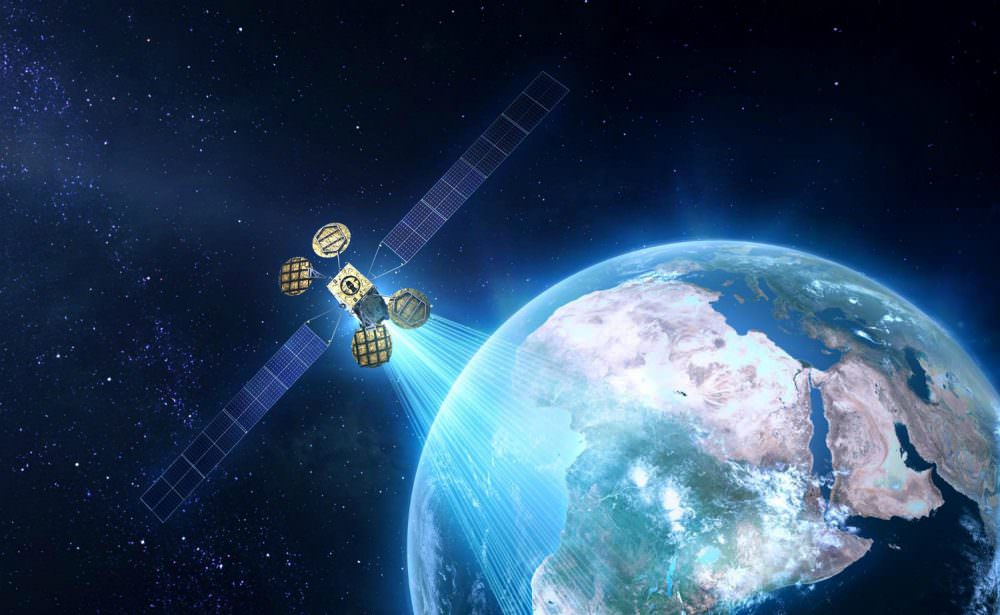In our last post on the GovSat Report, we reported on the 2016 Hosted Payload and Small Sat Summit. This event brought together the leading space industry and government stakeholders to talk about the emergence of small satellites and hosted payloads, their potential uses, and their current state of adoption across the federal government.
What we heard was that the military and the rest of the federal government were well aware of the benefits of hosted payloads, but concerns about risk and issues related to culture across agencies and military branches were impeding adoption.
But the light at the end of the tunnel does currently appear to be an enormous, burning beacon that’s much closer and more attainable than it ever has been in the not-so-distant past. That’s because many of the government decision makers in attendance were tirelessly working to champion hosted payloads, and made powerful statements about them being incorporated into future military and government satellite plans moving forward.
The timing for increased hosted payload adoption couldn’t be better. That’s because another common discussion at this year’s Summit focused on a huge problem that the military is going to face in the future. A problem that hosted payloads could help the military overcome – securing and protecting satellites in space.
Space – no longer the ultimate high ground
The protection of satellite networks and capabilities is a relatively new challenge facing our military. A fact that was emphasized by Dr. David A. Hardy, the Associate Deputy Undersecretary of the Air Force (Space), when he said, “We historically viewed space as the ultimate high ground – a place where our adversaries couldn’t attack us.”
But that invulnerability in space is gone. Space is an increasingly contested environment. Today, both government and commercial spacecraft face obstacles that they never faced before.

First, there’s the sheer number of objects in space, which is only going to increase as the cost of satellites and launch continues to decline. Each new satellite that is launched creates increased congestion and raises the probability of a collision in space. This was a popular topic of discussion at the Summit, the focus of an entire keynote discussion, and I’ll be discussing it in an upcoming post on the GovSat Report.
Then there are the issues that military satellites face with jamming, interference and direct kinetic attacks on satellites. These are all capabilities that our adversaries have, and can use to neutralize our satellite infrastructure – which is widely known to be a significant tactical advantage to our military.
With satellite communications so essential to activities in theater and our warfighter, it’s essential that satellites are protected in this new, contested environment. And if a satellite is targeted for jamming or kinetic attach, it’s equally essential that the capabilities it empowers aren’t lost. According to Dr. Hardy, “We need to build an overall DoD satellite architecture that is resilient, in that it maintains performance even if it is attacked.”
Hosted payloads and COMSATCOM as keys to resiliency
We know that our adversaries have been testing their capabilities for launching kinetic attacks against satellites. It’s no longer a question of “if” we’ll have to conduct military operations in situations where our satellite infrastructure is attacked or compromised – it’s a question of “when.”
Understanding the new risks to our satellites, the DoD is now looking at COMSATCOM services, small sats and hosted payloads as a potential way to increase its resiliency in these circumstances. According to Dr. Hardy, “(The) promise of increased capacity and hosted payloads in GEO – and small sats in LEO – provides opportunities to increase resiliency.”
How they accomplish that is very simple. By utilizing a combination of satellites and satellite services – including COMSATCOM capacity, hosted military payloads on commercial satellites and small sats in LEO or MEO orbits – for military operations, the DoD can effectively disaggregate their satellite communications network and make it significantly harder for adversaries to deny satellite communications and capabilities.

In this situation, it would be extremely difficult to target any one satellite to compromise the military’s satellite communications and capabilities. Even if a satellite was compromised, it would effectively fail to deny those mission-critical services.
Also, should an adversary look to disable a hosted payload or COMSATCOM service on a commercial satellite, they would effectively be targeting far more than a single nation’s military. They could be cutting off essential communications services for other nations, and maybe even their own citizens.
As Dr. Hardy stated, “A more proliferated architecture that is not all military only can increase capability and resilience.”
There is a significant groundswell of support for increased adoption of COMSATCOM services and hosted payloads across the federal government and military. Their ability to drastically increase the government’s access to space is one of the reasons for this support, but the need to protect satellites may be just as important.
It’s a new age in space, and we’re not alone in orbit. The speakers at the Hosted Payload and Small Sat Summit made it abundantly clear that we need to protect our satellites and satellite capabilities, and hosted payloads could play a role in accomplishing that mission.
For additional information on hosted payloads and the ways in which they can help the federal government by increasing access to space and cutting costs, click on the following resources:
